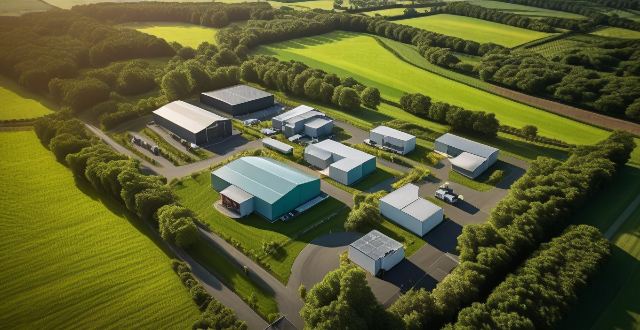Climate-smart technologies aim to reduce greenhouse gas emissions and enhance resilience to climate change impacts. Renewable energy sources, energy efficiency improvements, and nature-based solutions are key examples. These technologies offer promising solutions but face challenges related to cost, policy, and potential unintended consequences.

Can Climate-Smart Technology Be Used to Mitigate the Effects of Climate Change?
Climate change is one of the most pressing issues facing our planet today. The rise in global temperatures, caused by the increase in greenhouse gases such as carbon dioxide, is leading to a range of negative consequences, including more frequent and severe weather events, rising sea levels, and changes in ecosystems and wildlife populations. In response to these challenges, there has been a growing interest in developing and implementing climate-smart technologies that can help mitigate the effects of climate change.
What Are Climate-Smart Technologies?
Climate-smart technologies are innovations that aim to reduce greenhouse gas emissions and enhance the resilience of communities and ecosystems to the impacts of climate change. These technologies can take many forms, including renewable energy sources like solar and wind power, energy-efficient buildings and transportation systems, and nature-based solutions like reforestation and afforestation.
How Can Climate-Smart Technologies Help Mitigate Climate Change?
Renewable Energy Sources
Renewable energy sources like solar and wind power are becoming increasingly popular as alternatives to fossil fuels, which are major contributors to greenhouse gas emissions. By shifting towards renewable energy sources, we can significantly reduce our carbon footprint and slow down the rate of global warming.
Energy Efficiency
Improving energy efficiency in buildings and transportation systems can also help reduce greenhouse gas emissions. For example, designing buildings with better insulation and using energy-efficient appliances can lower energy consumption and reduce carbon emissions. Similarly, investing in public transportation and promoting the use of electric vehicles can reduce the number of cars on the road and lower transportation-related emissions.
Nature-Based Solutions
Nature-based solutions like reforestation and afforestation can help absorb carbon dioxide from the atmosphere and store it in trees and plants. This not only helps reduce greenhouse gas emissions but also provides other benefits like improving air quality, preventing soil erosion, and supporting biodiversity.
Challenges and Limitations
While climate-smart technologies offer promising solutions for mitigating the effects of climate change, there are also challenges and limitations to their implementation. For example, the high initial costs of renewable energy infrastructure and the lack of political will to prioritize climate action can hinder progress. Additionally, some climate-smart technologies may have unintended consequences or trade-offs that need to be carefully considered.
In conclusion, climate-smart technologies have the potential to play a crucial role in mitigating the effects of climate change. However, their success will depend on overcoming challenges related to cost, policy, and unintended consequences. It is essential to continue investing in research and development of these technologies while also addressing broader systemic issues related to climate change.